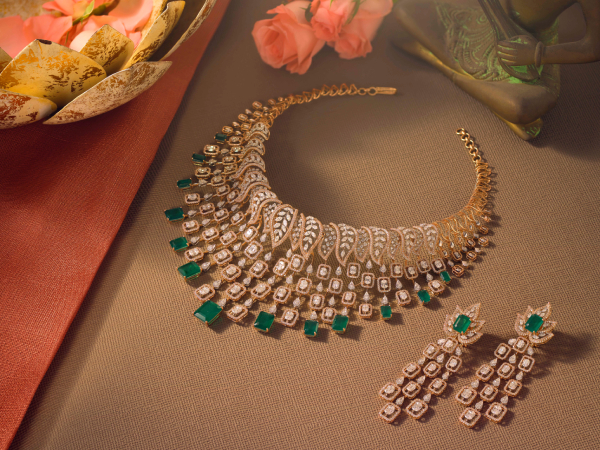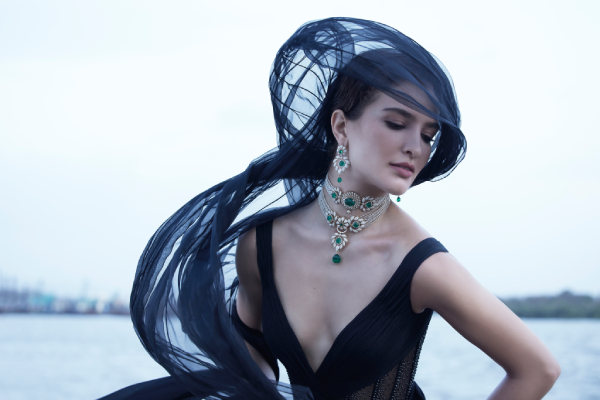Ever wondered how India’s foremost jewellery brands cater to the demands of the country’s diverse and distinctive wedding cultures? How do they consistently create successful collections for modern-day brides who are influenced by dynamic international fashion trends and find themselves at the intersection of modernity and tradition as they carefully choose jewellery for their significant day?
In an exclusive dialogue, prominent designers and influential decision-makers from India’s renowned jewellery houses share insights with Shilpa Dhamija, shedding light on the nuanced artistry and expertise that define their approach.
This year, Tanishq, a leading jewellery brand under the Titan group, expanded its network not just in India but also in the Middle East, ahead of the much-awaited wedding season that is likely to be a key driver of sales for most Indian jewellery brands in the second half of the financial year.
For the wedding period, Tanishq has launched several collections using natural diamonds as well as the traditional yellow gold. It also collaborated with Indian couturier Tarun Tahiliani to design a special wedding jewellery collection under its Rivaah line using natural & uncut diamonds, pearls and coloured gemstones. So how does Tanishq, which caters to global wedding markets, predict the new season’s bejewelled hits?
“We have a design-centric product introduction process,” states Garima Maheshwari, Head of Design at Tanishq. “We are deeply inspired to delight our consumer, the Indian woman who is modern yet rooted. The understanding of her varied facets, feelings and aspirations becomes our guiding philosophy for new creations.”
According to Maheshwari, the design team at Tanishq conducts extensive trend research, surveys, market visits and focused customer interactions throughout the year to perceive consumer sentiments. It also studies fashion and colour trends to predict what colour palettes may be popular for the season. “Like interesting infusion of shades of whites and washed pastels seen this season in Indian wedding ensembles.”
For Vandana Jagwani, Creative Director at Mahesh Notandass Fine Jewellery, predicting trends demands constant researching and archiving. “Designing and predicting the upcoming trends in wedding jewellery is also an intuitive process,” she says. “We take note of what we see around us, what kind of clothes people choose to wear. For instance, if athleisure is trending then we know that the comfort factor will influence the design trends of the season.”
Malabar Gold & Diamonds, one of the biggest jewellers in the world uses new-age, data-driven technologies among other methods, to understand the demand patterns both in bridal and non-bridal jewellery categories. “We are continuously strengthening our social listening capabilities by adopting tools and applications such as Konnect Insights. These tools, which are majorly artificial intelligence-driven, help us in understanding consumer behaviour and sentiment as well as identifying emerging trends,” reveals MP Ahammed, Chairman, Malabar Group.

Social media is exposing consumers to global tastes as well as India’s diverse multi-cultural rituals, according to Jagwani. “Wedding jewellery buyers are refining their taste with this exposure and not limiting their choices to atypical styles,” she says, adding that Notandass adopts global design sensibilities and concentrates on minimalistic lines even for its high-end jewellery. “Millennials and Gen-Z want to buy jewellery that they can keep and repeat.”
Echoing Jagwani’s sentiments, Maheshwari believes while Bollywood, celebrities and social media influencers have an impact in driving new trends, particularly in the metros, “the wide appeal of yellow gold and other ritualistically symbolic colours continues to stay strong across regions and will also reflect in our designs,” she says.
Even for Malabar, gold reigns in wedding jewellery. “Gold is an integral part of a bridal ensemble; bridal gold jewellery always dominates the broader demand trend.”
Ahammed affirms adding that new-age brides project distinct sensibilities and thus their choices cannot be defined by any particular trend.

Bridal Trends Autumn Winter 23-24
For Malabar, celebrating unique bridal customs of India’s diverse cultures is the trend of the season. “On one hand, one can see a revival of heritage designs and on the other, there is an emerging trend of minimalistic designs,” says Ahammed.
This wedding season, Jagwani believes that diamonds are making a comeback, clubbed with lots of coloured gemstones. “Polki (uncut) diamonds have had their fair share of time,” she observes.
However, Maheshwari predicts that polkis will continue to trend in many regions in India. “Pastel shades in polki jewellery will continue to do well in the metros this time.” Tanishq is expanding its jewellery savoir-faire to also cater to multiple celebratory functions other than the D-day for the bride. “Diamonds for these occasions are taking centre stage”, she says, noting that even in the southern states where mehndi or sangeet was not traditionally celebrated as separate functions are now common affairs. “Brides often choose diamond jewellery for these to suit their sophisticated looks,” she concludes.

